“Germany has become a country that many people abroad associate with hope.” – Angela Merkel. -Source: Quotes that didn’t age well.
Over the last two decades, no nation on Earth has been more celebrated by wind and solar advocates than Germany for its efforts to phase out fossil fuels and nuclear power in favor of these intermittent energy sources.
Germany’s Energiewende, or “Energy Transition,” has inspired taxpayer-funded junkets to Germany so state legislators could learn about the wonders of the German energy system. The Energiewende has also been on the receiving end of puff pieces from all the usual suspects in the media, including The New York Times, Inside Climate News, and Forbes.
In a similar vein, it feels like no country has been as insufferably self-righteous about their energy decisions as the Germans. In 2017, then-Chancellor Angela Merkel lectured the U.S. about its energy policies, and in 2018, German Foreign Minister Heiko Maas and other German delegates laughed when then-President Trump correctly warned of the dangers of becoming overly reliant upon Russian natural gas.
Now, the prevailing economic news out of Germany is low growth and deindustrialization, largely due to a thicket of regulatory red tape, high taxes, and high energy prices. Germany’s smug green pedestal is crashing down faster than a wind turbine on top of a German coal deposit, and we would be lying if we said we don’t feel a small glimmer of Schadenfreude.
Energiewende? More like, Energiewiemar.
This week, we look at the impact of the Energiewende on electricity prices. Next week, we will delve into the nascent deindustrialization of Deutschland.
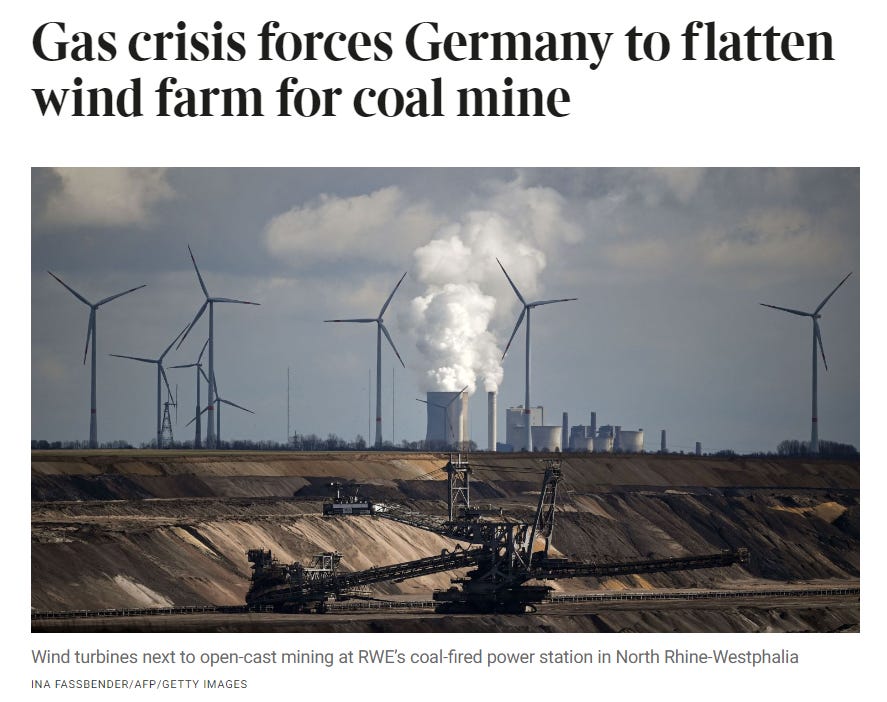
What is the “Energiewende”?
In a 2020 article for IEEE Spectrum, energy historian Vaclav Smil wrote:
In 2000, Germany launched a deliberately targeted program to decarbonize its primary energy supply, a plan more ambitious than anything seen anywhere else. The policy, called the Energiewende, is rooted in Germany’s naturalistic and romantic tradition, reflected in the rise of the Green Party and, more recently, in public opposition to nuclear electricity generation.
The policy worked through the government subsidization of renewable electricity generated with photovoltaic cells and wind turbines and by burning fuels produced by the fermentation of crops and agricultural waste. It was accelerated in 2011 when Japan’s nuclear disaster in Fukushima led the German government to order that all its nuclear power plants be shut down by 2022.
According to Clean Energy Wire, the German Energiewende has two primary pillars. 1) Shut down the nuclear power plants operating in Germany, and 2) Transition away from fossil fuels by building wind and solar installations to achieve at least 80 percent renewable energy in the electricity mix by 2030.
These goals have led to a significant increase in the installed capacity of wind turbines and solar panels in Germany. Data from Energy Charts shows the total installed generating capacity on the German system has doubled since 2008, rising from 136.3 gigawatts (GW) to 277 GW in 2024.
The graph below shows that almost all of this new net capacity, 140.4 GW in total, was wind and solar. In fact, solar constituted 61 percent of the capacity additions, onshore wind constituted 28 percent, and offshore wind constituted 6 percent. New natural gas capacity accounted for 9.6 percent of the growth, which was more than offset by closures of German coal, lignite, and nuclear capacity.
As a result, the share of German electricity provided by solar, onshore wind, and offshore wind thus far in 2024 has been 17.73 percent, 22.2 percent, and 5.4 percent, respectively.
It’s worth noting that these energy sources constituted 64 percent of all the installed capacity on the German grid but generated only 45 percent of Germany’s electricity thus far in 2024.
Adding insult to injury, Germany was a net importer of electricity in 2023 even though the installed capacity on its grid has more than doubled since 2008.
All of this spending on excess generating capacity has caused Germany’s electricity prices to skyrocket to some of the highest in the world.
The High Cost of Energiewende
In 2004, former Green environment minister Jürgen Trittin famously said that the burden placed on households by the renewable energy surcharge would amount to “only around one euro per month, the price of a scoop of ice cream.” This quote has not aged well.
Residential Electricity Prices
The graph below shows the historical breakdown of residential energy prices in Germany from 2006 through the second half of 2022. The important part of the graph is the light blue portion, which shows the renewable energy surcharge.
These surcharges forced German families to pay for wind and solar projects in their electric bills. The cost of the surcharges grew from 0.88 cents per kWh in 2006 to 6.5 cents in 2021. The high cost of these controversial surcharges eventually led to their phase-out in July of 2022. Wind and solar projects are now directly subsidized by the government, but this does not reduce the cost of building these facilities; it simply shifts the cost burden to taxpayers rather than ratepayers.
The impact of rising electricity costs on household budgets has been significant. Data from Statista show that the average monthly electricity bill for a family of three in Germany has increased from $63 in 2008 to $121 in 2024.
According to European Commission data, Germany has the highest electricity prices in the EU-27 region, with residential prices of 40 Euro cents per kilowatt hour (kWh) in 2023. For reference, this is nearly three times more than the cost of electricity for U.S. households.
One reason residential electricity prices are so high in Germany is that large industrial customers have been largely exempt from the costs of the Energiewende by receiving exemptions from paying for levies used to fund wind and solar development.
Industrial Electricity Prices
These exemptions only exist for the largest industrial users, however. These large consumers are also set to receive a subsidized electricity price of 6 cents per kWh through 2030 for up to 80 percent of their electricity consumption. Smaller businesses are on the hook for much higher prices.
The graph below uses data from BDEW, and it shows industrial electricity prices for small and medium-sized businesses that were not exempt from renewable energy surcharges. Prices rose steadily from 2014 through 2021 but spiked in 2022 due to high natural gas prices. In response to the surging costs, the German government eliminated the renewable surcharge and reduced electricity taxes for small and mid-sized industrial consumers, bringing the total cost down to 16.66 Euro cents per kWh.
For context, the graph below shows average industrial electricity prices in the United States from 2014 through 2024. In June of 2024, U.S. industrial prices were just 7.6 Euro Cents per kWh.
While this isn’t exactly an apples-to-apples comparison of the average industrial electricity prices, it shows that America’s average industrial electricity prices are almost as low as the subsidized prices that large German firms will receive and much lower than the prices for small and medium-sized German firms.
Conclusion
Germany’s energy policies are having the entirely foreseeable consequences of increasing energy costs. The nation’s decisions to phase out nuclear power plants and double the size of its electric grid with wind and solar have caused electricity prices to rise, and the nation’s reliance on Russian natural gas added to the price shocks when Ukraine was invaded.
Now, German families and businesses are saddled with higher energy bills, and the nation is starting to deindustrialize. More on that next week.
Efficiency in Capacity Markets by
Can energy efficiency save PJM?





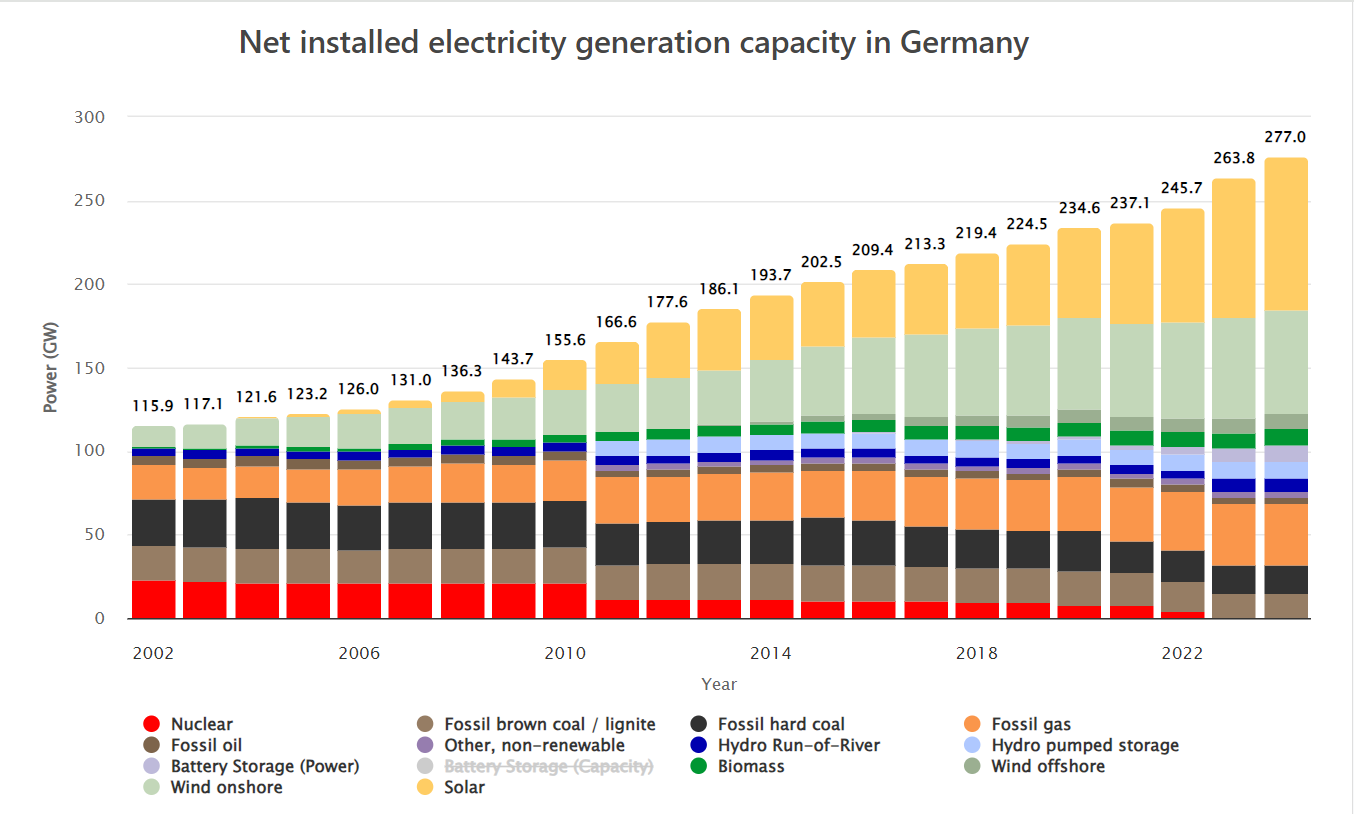
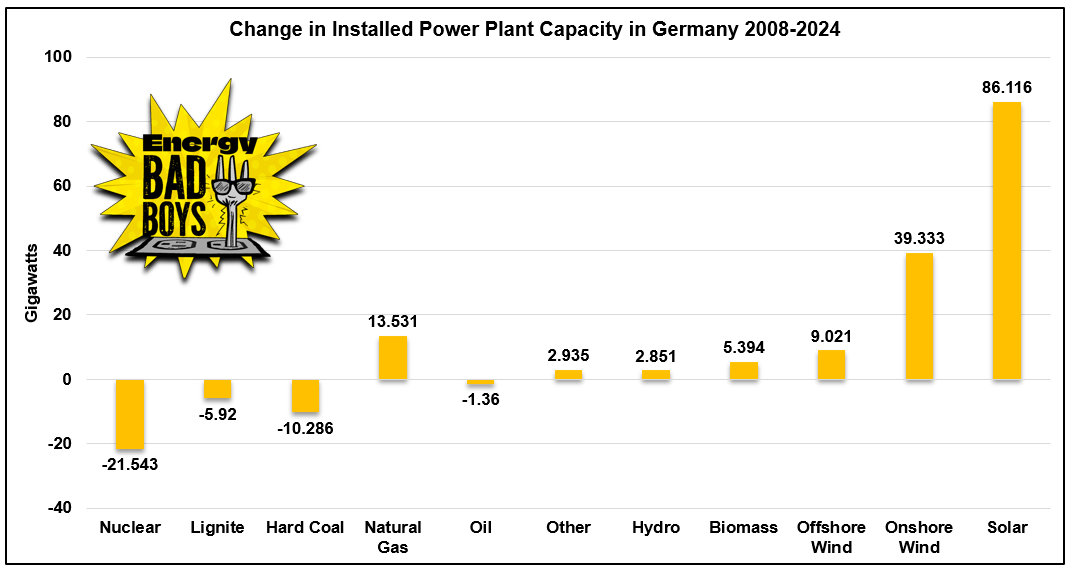
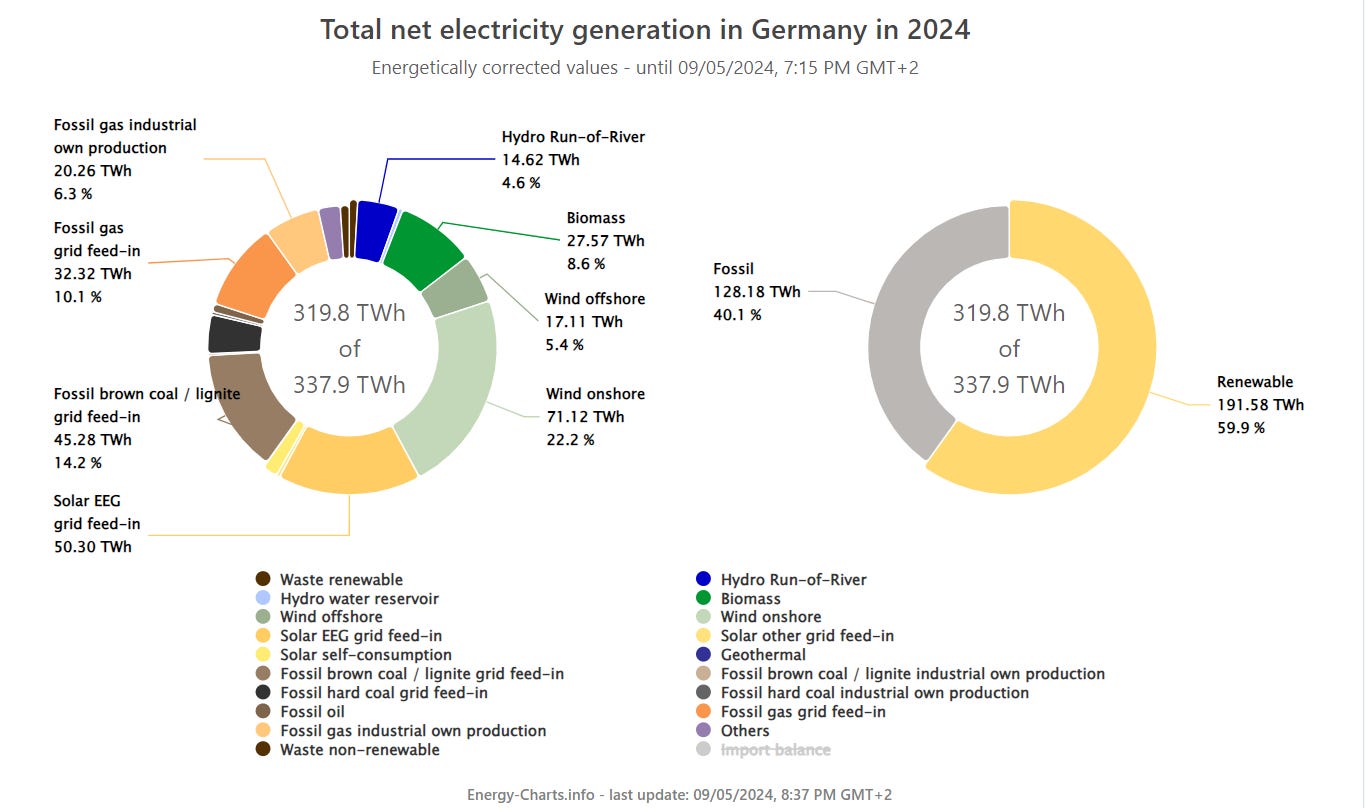
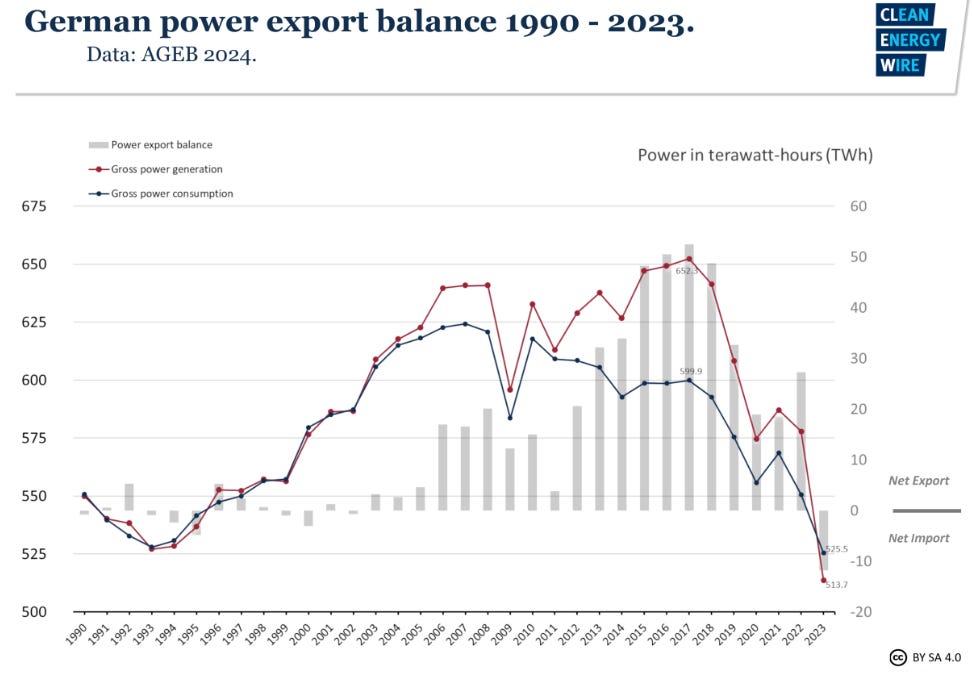
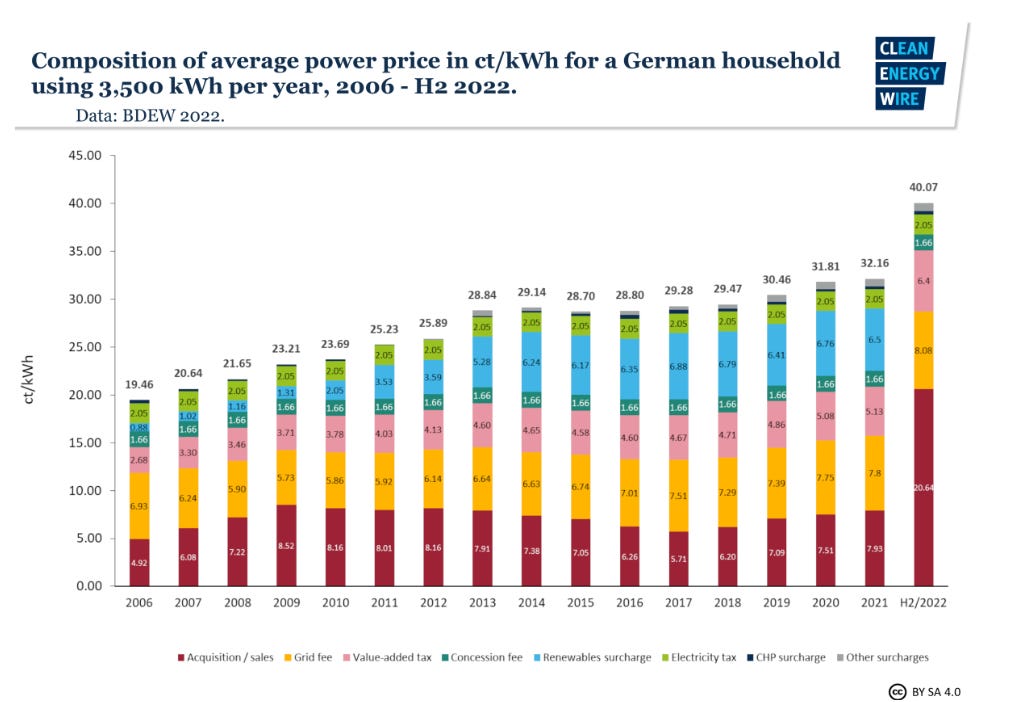
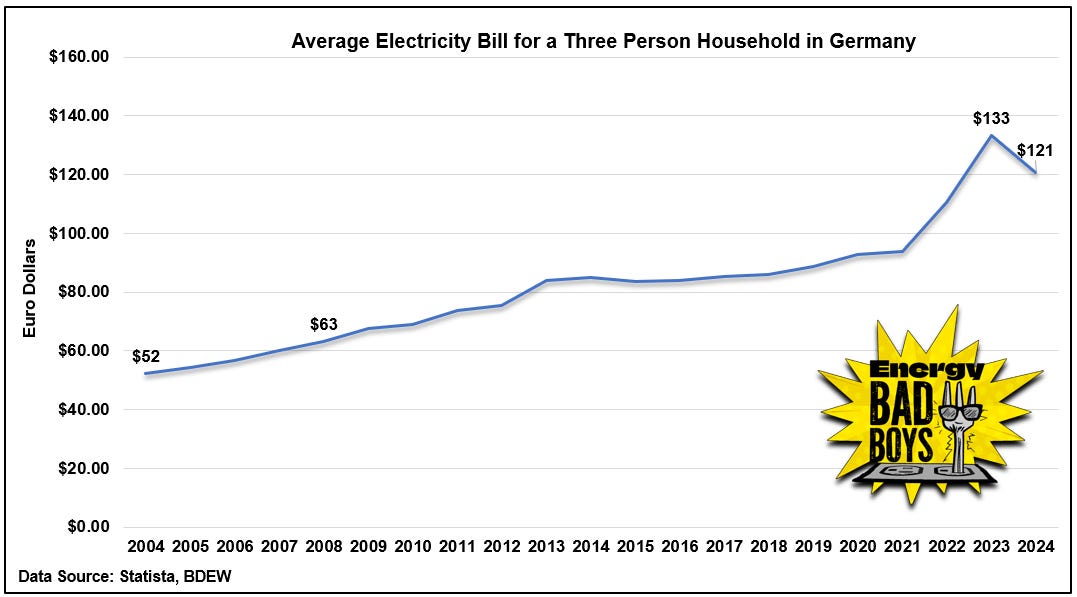
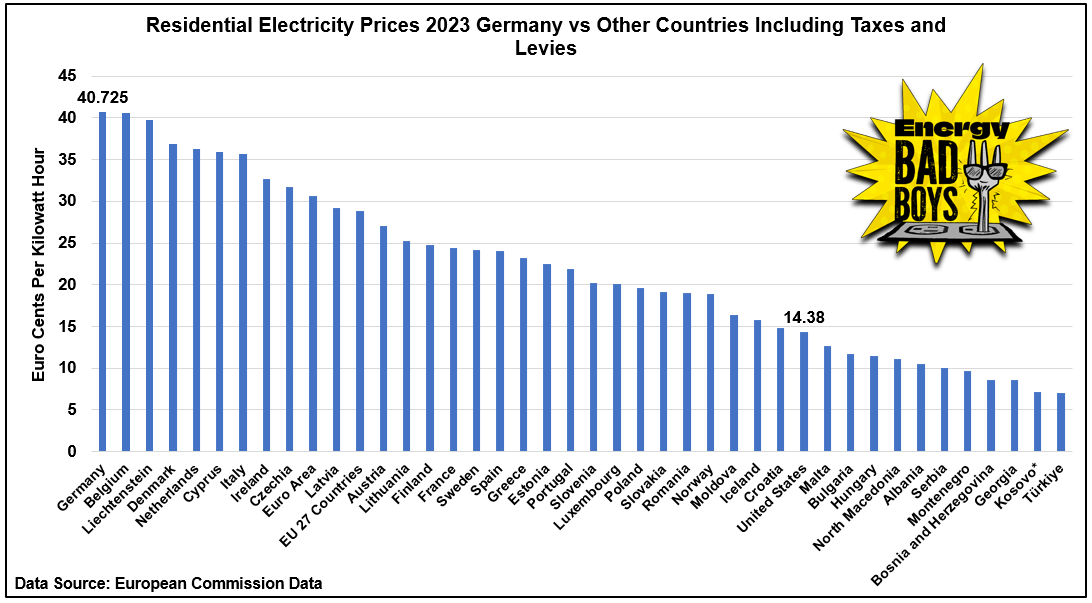
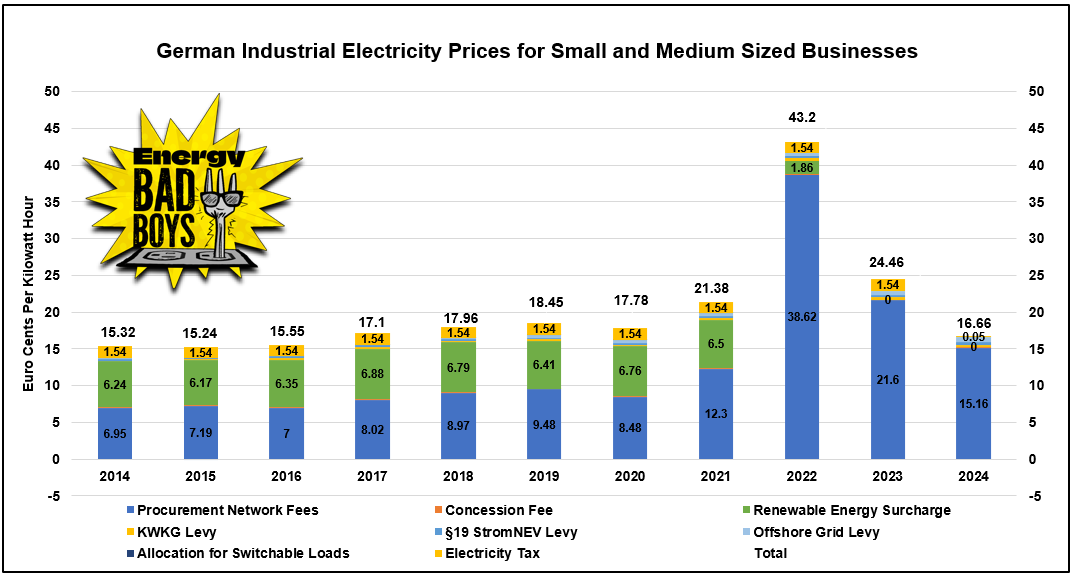
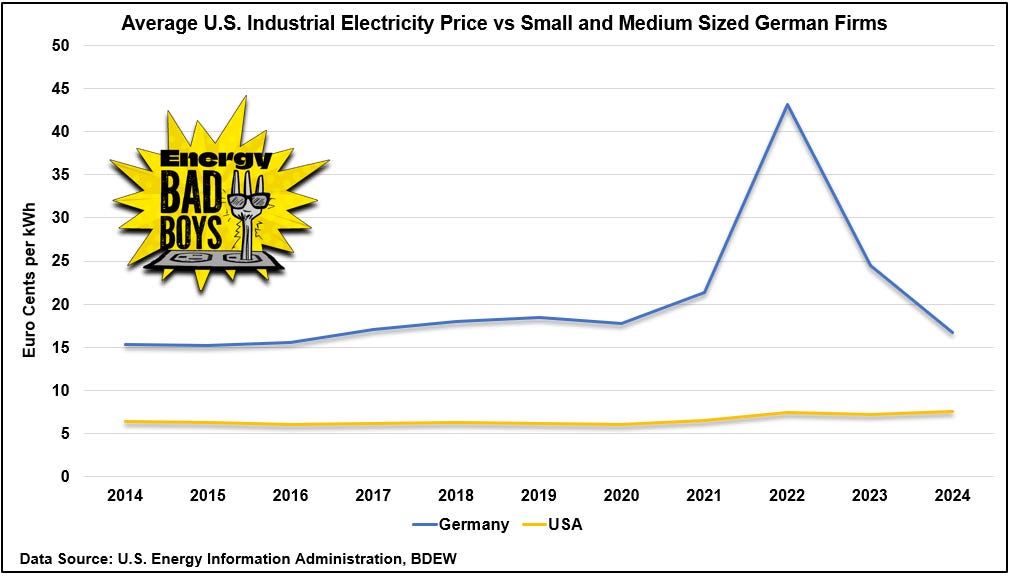

Well done again EBBs. Incredible as it is, it's evident that the new UK Labour government (along with sizeable minority Liberal Democrat party), regards Germany as a role model, apart from the degree of insanity over nuclear power (though for new stuff it's "too expensive and takes too long to build"). There's no need to read fiction here, we're living it.
As has been pointed regularly here by the EBB’s MISO will share a similar fate, and when the rate and tax payers in MISO suffer rolling blackouts in the dead of say a Minnesota winter, they may ask the public officials who gleefully led them down the road to self destruction what model they used. No doubt the imbeciles will say “We looked at Germany!” Let the Balkanization of generation, transmission and distribution continue, we have a great model, Western Europe! What a great idea. Offshore wind south Nantucket Island anyone??!!